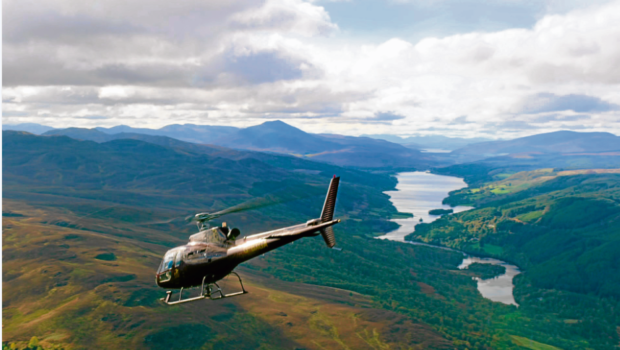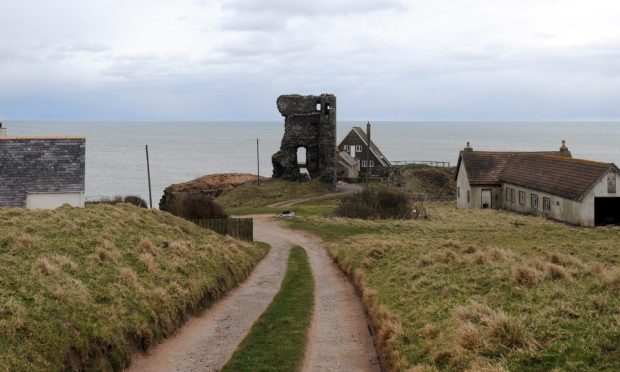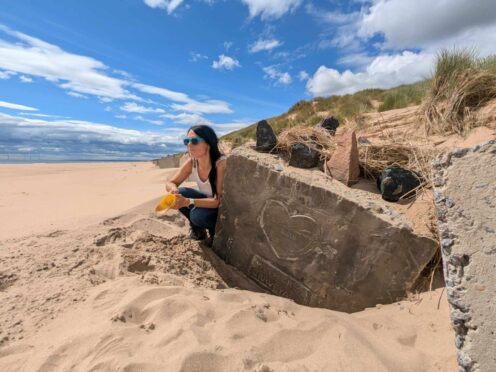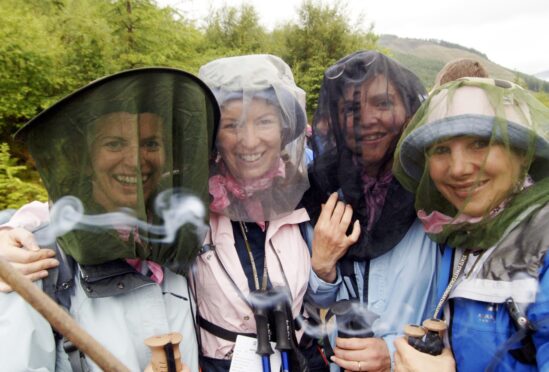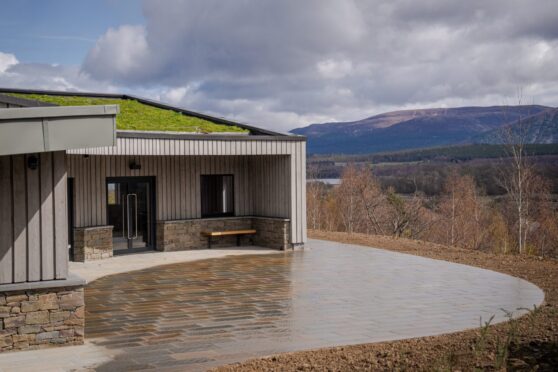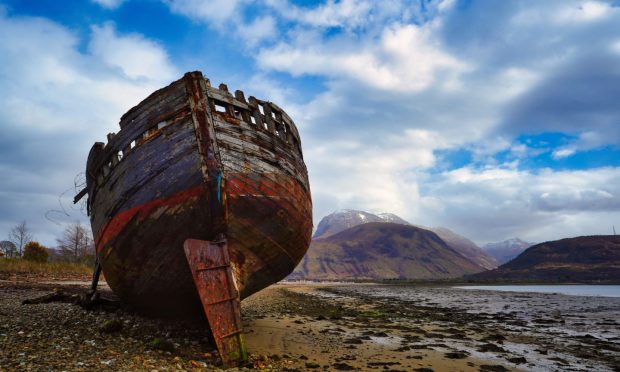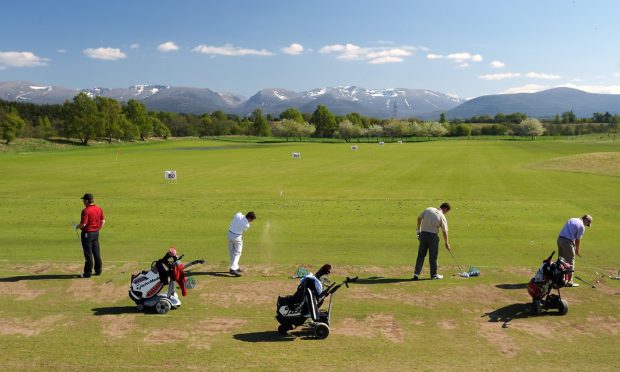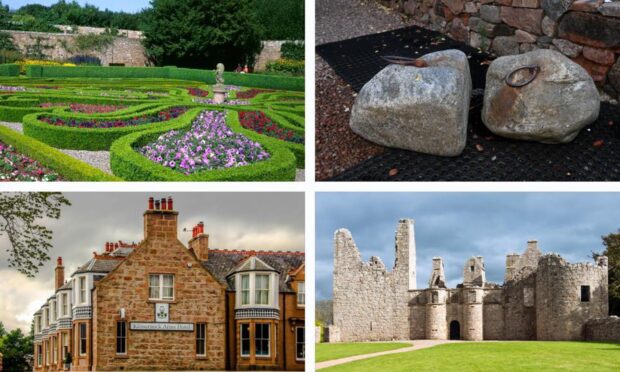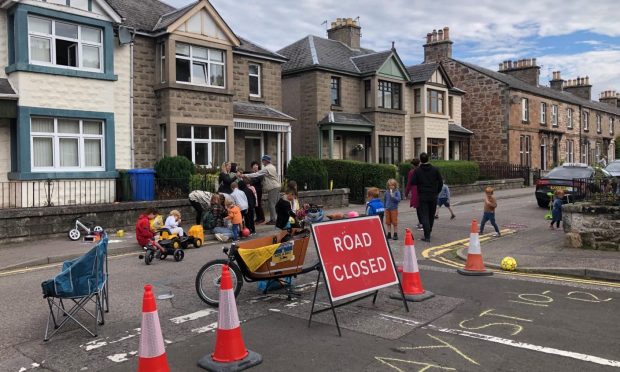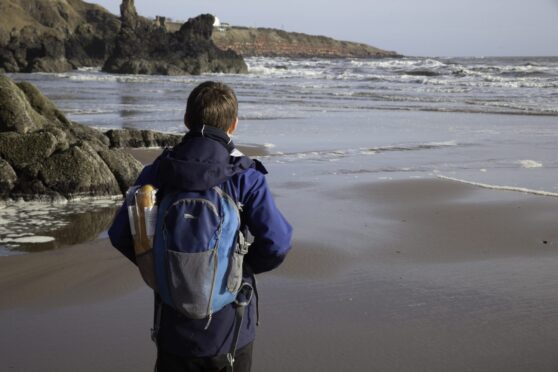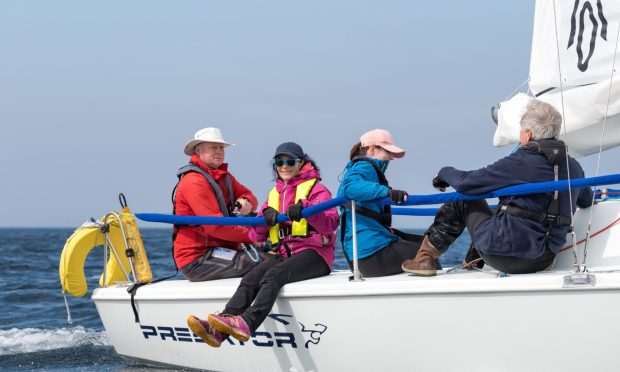Jamie Crawford might be nearly 40, but he was transported back to his youth when he soared over the Caledonian countryside in a refulgent Tiger Moth last summer.
The Shetland-born writer and presenter of a major new BBC series has spent the last decade meticulously researching Scotland’s National Collection of Aerial Photography – an archive containing millions of images – and he has immersed himself in exploring how his homeland has changed over the course of decades, centuries and millennia.
Yet, as he admitted, nothing could have prepared him for the sheer adrenaline rush and giddy exhilaration which he derived from witnessing the transformation of the landscape from a bird’s eye view.
The results will be unveiled in the Spring with the first of three episodes of “Scotland from the Sky”, but the Press and Journal has seen the programmes and they are a stunning combination of aviation adventure and historical detective work, encompassing everything from the forgotten factories, abandoned villages and secret military installations of recent conflicts to the country’s ancient past, which includes a lunar calendar in Crathes.
Jamie is a natural communicator, somebody whose ebullience and passion for his subject matter is instantly infectious, and you wouldn’t guess this was his first TV documentary series.
He said: “It was quite an intense experience, but the results were worth all the effort and this is the closest to time travel that you can go.
“One day we were in Stranraer, the next we were in Wick, we flew over all the islands and discovered so much that simply wouldn’t have been possible if we had been on the ground.
“We looked at how the cityscapes had changed, and it’s extraordinary how different they are from even 30, 40 or 50 years ago. But then, that is true of the countryside and the coast as well.
“In some parts of Scotland, we were flying at the ‘golden hour’ – the time when the sun’s low raking light creates remarkable panoramas – and it was like returning to the distant past and unearthing hidden secrets.
“Flying in the Tiger Moth’s open cockpit was unforgettable, and it was such an invigorating feeling, but it was also a reminder that nothing stands still.
“At one point, these craft were the latest models and must have been considered very cutting edge. But now, we have helicopters, drones and we are always developing and that was one of the main things we learned while making the series.”
The modern aerial shots possess an imperious quality, but the programmes benefit most from the juddering contrasts between the old and the new and the fashion in which the production deftly interweaves the two.
Jamie, for instance, highlights the amazing sight of Glasgow’s Bellahouston Park being completely transformed into a vision of the future for the 1938 Empire Exhibition, examines the construction of the M8 in the 1960s and takes a peek into the astonishing development of Dundee’s Waterfront with the creation of the V&A Museum.
But, as somebody fascinated by history, he also delves into esoteric areas and discovers an abundance of arcane and amazing stories, often in the unlikeliest of places.
One of his myriad journies sees him arrive at an apparently nondescript field in Deeside and the words ‘Nothing to see here’ spring to the surface…until an aerial shot of the site revealed a quirky set of holes which subsequently turned out to be a Neolithic calendar, from where the very concept of time emerged.
This continues with Jamie’s sojourn to Kintore, in Aberdeenshire, where he investigated one of the Romans’ most extensive encampments in the whole of Britain and travelled from there to Skye, where he unearthed a shadowy harbour from the invasion of the region by the Vikings. It’s one of the treats of the series: the manner in which we are following in the footsteps of our ancestors, wherever we venture.
As Jamie added: “The script was written between April and June last year and the filming was then carried out in July, August and September, so it was a fairly hectic schedule, but we learned so much and gained so many new perspectives it was as if we were able to bring a lot of the old archive material to life, and discover things which we didn’t know before.
“The lunar calendar was one of the most obvious examples. It is one of the oldest sites ever discovered in Scotland and we are going back millennia and yet it is still mysterious and poses as many questions as answers.
“The series is obviously a social history. It’s looking at the earliest aerial photographs we have, which date back to the 1920s, and bringing them up to date.
“But I was very aware, as we were doing the filming, that the landscape is always evolving, it is constantly changing, and it will probably look very different again two or three decades from now.
“One of the most obvious signs of this is in renewable energy. There was no sign of wind turbines or solar panels in the pictures from the 1970s or the 1980s, but the transformation has been significant across Scotland.”
Many people thrill at life in the air, but Jamie was as intent on chronicling life on the ground. Yet, while the Scottish environment understandably dominates the series, there is nothing parochial about the content.
On the contrary, he charts the story of Aerofilms, the company which pioneered much of the early revolution with a pioneering spirit which comes straight from the early days of Hollywood.
And he looks at the amazing work carried out by Scotsman Douglas Hamilton, the first man to fly over Everest, who recorded the adventure on film for posterity as he went “over the roof of the world.”
As for his own personal highlights during his far-flung pursuit, Jamie admitted that one or two sprung to mind immediately.
He said: “The Tiger Moth trip was surreal – especially given the fact we were being followed by a helicopter. It almost made you a bit envious of how those original fliers must have felt in their flying machines.
“They were doing something which can never be recaptured. They were genuine trail-blazers and I have the highest admiration for them.
“It was also special going to the Viking shipyard on Skye – it dates back to 1,000 years ago, but it still gives you an experience of what was happening then and you can stand at the site and imagine it for yourself.
“I just hope that viewers find these things as fascinating as I did and they recognise that archaeology is all around us wherever we go in Scotland, from the biggest city to the smallest village on the coast.”
He need have no concerns on that score. The series is both grand in vision and sumptuous to behold. And by the by, it is likely to transport Jamie Crawford into a new dimension of popularity.
Scotland from the Sky starts on BBC Scotland in the Spring. The accompanying book to the series will be published on March 28 by Historic Environment Scotland (RRP £25).
Jamie Crawford works as a publisher at Historic Environment Scotland [HES], the charitable organisation which is dedicated to the advancement of heritage, culture, education and environmental protection.
Born in Shetland in 1978, he studied History and Philosophy of Law at Edinburgh University and developed a deep affinity for the past.
During the past decade, he has researched Scotland’s National Collection of Aerial Photography and has written several photographic books on its history, origins and applications.
These include Above Scotland (2009), Scotland’s Landscapes (2012) and Aerofilms: A History of Britain from Above (2014).
His first major work of non-fiction Fallen Glory: The Lives and Deaths of the World’s Greatest Lost Buildings was published to critical acclaim in November, 2015 and was selected as a “Book of the Year” by several publications.
In 2016, Jamie was elected as chair of the board of Publishing Scotland.
His most recent book, Who Built Scotland: A History of the Nation in 25 Buildings, was released last year and was co-authored with Alexander McCall Smith, Alistair Moffat, James Robertson and Kathleen Jamie.
